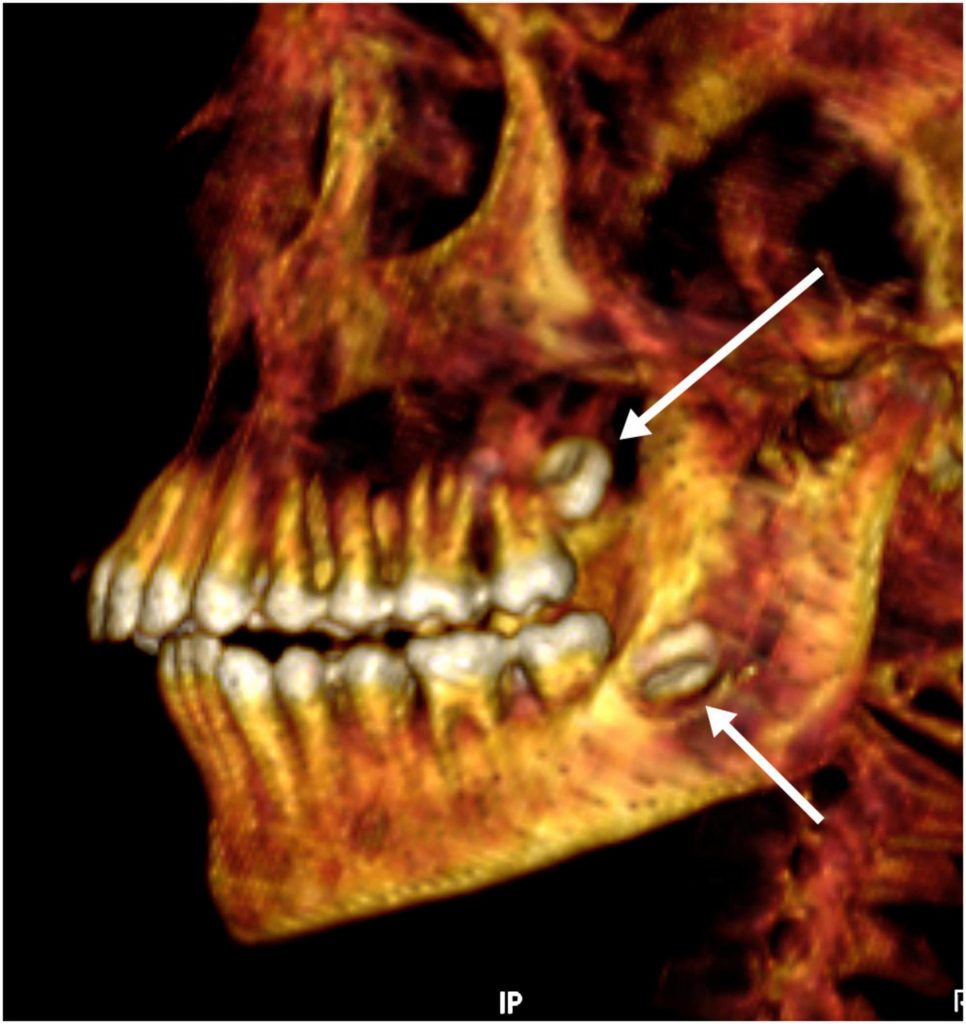Egyptian scientists used CT scans to look inside the mummy of a wealthy teenager.
The mummy of the "Golden Boy" was found in the cemeteryof the Ptolemaic era in the city of Edfu at the beginning of the last century, in 1916. Since then, the mummy, which has not been opened or processed, has been kept in the basement of the Egyptian Museum in Cairo. Archaeologists have used CT to find out what is hidden under its covers without damaging the integrity of the mummy.
 Layered analysis of the mummy using CT. Image: Sahar N. Saleem et al., Frontiers in Medicine
Layered analysis of the mummy using CT. Image: Sahar N. Saleem et al., Frontiers in Medicine
The study confirmed the hypothesis that speechit is about a young man: male genitalia were found in the mummy, and the fusion of the epiphyses and teething indicate that the “golden boy” died at the age of about 14-15 years. The researchers found that the child had good teeth until death, and the bones did not contain traces of poor nutrition. There are also no signs of violent death.
On the last journey, the ancient Egyptian "major"set out surrounded by at least 49 amulets of 21 different types. CT showed that they are located in three columns inside the mummy itself and between the folds of its "wrappers". Among them are well-known symbols of that time: for example, the wadjet (eye of Horus), the scarab, the horizon amulet akhet and others. About two-thirds of these relics are made of gold, the rest are made of semi-precious stones, baked clay or faience.


Mummy in its natural form (left) and the internal appearance of the body and amulets on CT. Image: Sahar N. Saleem et al., Frontiers in Medicine
The researchers note that the useamulets, apparently associated with the religious beliefs of the time. For example, an amulet with a golden tongue is placed in the mummy's mouth so that the deceased can speak in the afterlife. A protective sign with two fingers is located near the penis of the "boy". It is assumed that this amulet guards the incision through which the embalming took place.


Reconstruction of the mummy's skull and jaw. It can be seen that the epiphyses have already grown together, but the wisdom teeth have not grown. Image: Sahar N. Saleem et al., Frontiers in Medicine
Archaeologists believe that the ancient Egyptians believed inafterlife. They believed that the spiritual body of a person is looking for the afterlife. But entry into it was not guaranteed: first, a dangerous journey through the underworld was required, followed by an individual final judgment. It is believed that the relatives of the deceased placed amulets to help the deceased pass this path.
Read more:
A giant sunspot is turning towards the Earth. It is visible to the naked eye
See how a bladeless plane flies. Its speed exceeds 900 km/h
The Milky Way is abnormally large for its galactic filament